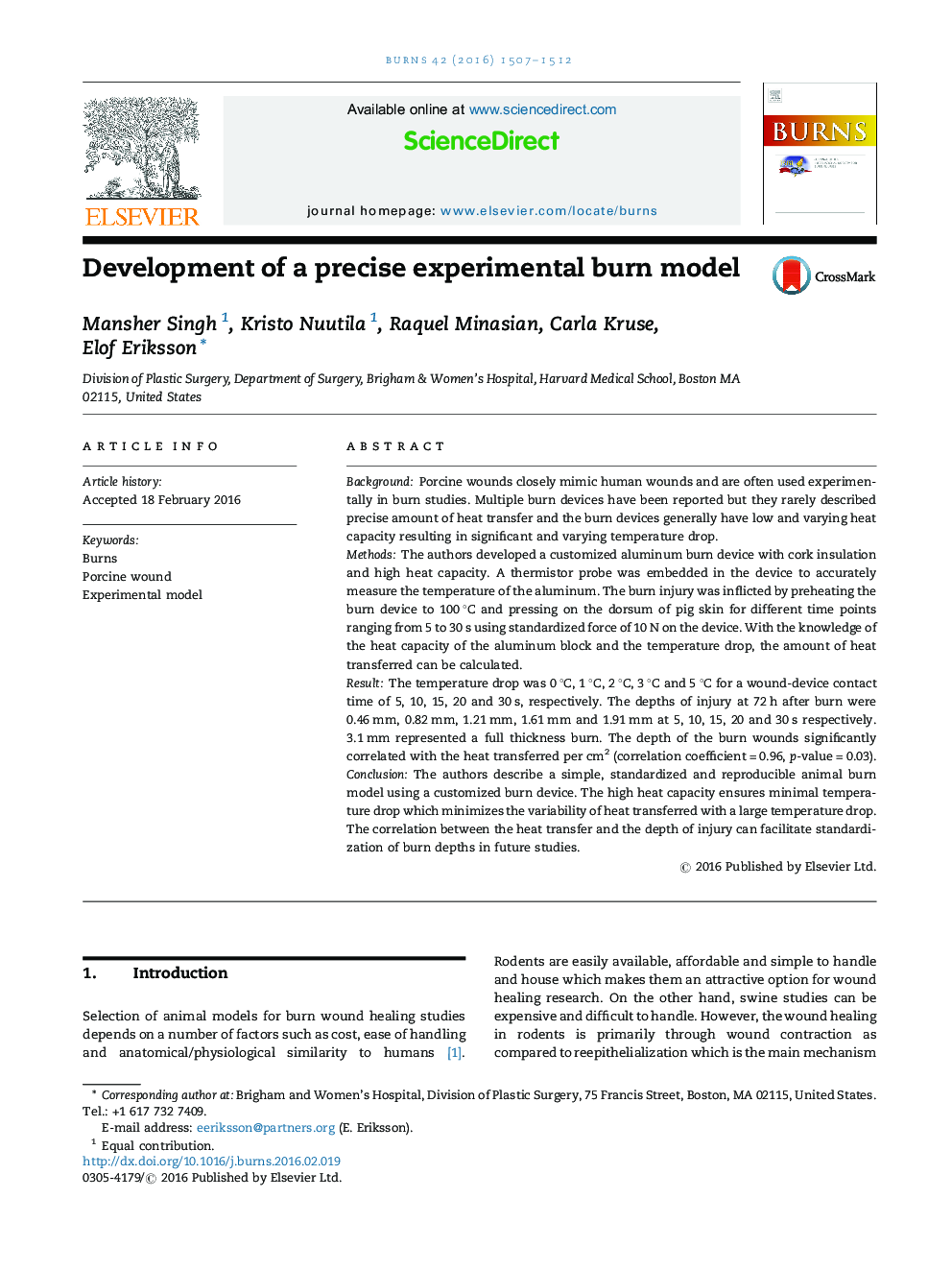| Article ID | Journal | Published Year | Pages | File Type |
|---|---|---|---|---|
| 5636246 | Burns | 2016 | 6 Pages |
â¢A simple, standardized and reproducible animal burn model is described.â¢Precise amount of heat transferred per cm2 of each wound can be calculated.â¢The high heat capacity ensures minimal temperature drop with heat transfer.â¢The depth of the burn wounds significantly correlates with the heat transferred per cm2.
BackgroundPorcine wounds closely mimic human wounds and are often used experimentally in burn studies. Multiple burn devices have been reported but they rarely described precise amount of heat transfer and the burn devices generally have low and varying heat capacity resulting in significant and varying temperature drop.MethodsThe authors developed a customized aluminum burn device with cork insulation and high heat capacity. A thermistor probe was embedded in the device to accurately measure the temperature of the aluminum. The burn injury was inflicted by preheating the burn device to 100 °C and pressing on the dorsum of pig skin for different time points ranging from 5 to 30 s using standardized force of 10 N on the device. With the knowledge of the heat capacity of the aluminum block and the temperature drop, the amount of heat transferred can be calculated.ResultThe temperature drop was 0 °C, 1 °C, 2 °C, 3 °C and 5 °C for a wound-device contact time of 5, 10, 15, 20 and 30 s, respectively. The depths of injury at 72 h after burn were 0.46 mm, 0.82 mm, 1.21 mm, 1.61 mm and 1.91 mm at 5, 10, 15, 20 and 30 s respectively. 3.1 mm represented a full thickness burn. The depth of the burn wounds significantly correlated with the heat transferred per cm2 (correlation coefficient = 0.96, p-value = 0.03).ConclusionThe authors describe a simple, standardized and reproducible animal burn model using a customized burn device. The high heat capacity ensures minimal temperature drop which minimizes the variability of heat transferred with a large temperature drop. The correlation between the heat transfer and the depth of injury can facilitate standardization of burn depths in future studies.
